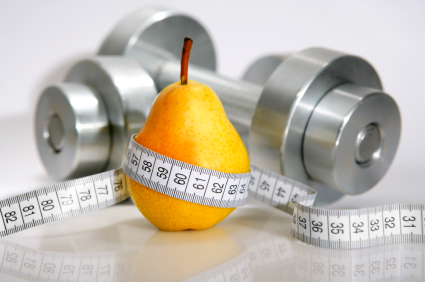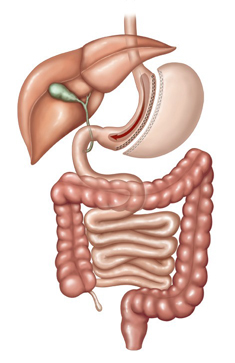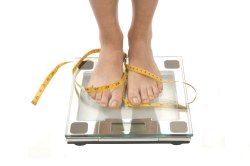How to Lose Weight in 3 Months
Losing weight in a safe, healthy and appropriate manner is the best way to long-term success. Since slower weight loss is generally thought to be safer[1], three months is a good amount of time to lose a considerable amount of weight. In that time period, it's safe to aim to lose about 12- 20 pounds which comes out to be about 1-2 pounds per week. So if you're interested in losing a small to moderate amount of weight, there are a few things you can do to slowly and safely lose weight in 3 months.
Steps
Part 1 Modifying Your Diet for Weight Loss
-
1
Meet a doctor or registered dietitian. Prior to starting any weight loss or diet program, it's ideal to speak to your doctor or even with a registered dietitian. Your doctor will be able to tell you whether your diet program is safe and healthy for you.
- They may also be able to provide you with additional guidance or recommend alternatives that might be more appropriate for your health.
- A registered dietitian is a nutrition expert that may give you a more effective diet for weight loss. They can create a meal plan for you that will help induce weight loss in addition to guiding you towards healthy foods to help you lose weight.
- Visit the EatRight website and click on the orange "Find an Expert" button on the top right to search for a dietitian in your area.
-
2
Count calories. In order to lose weight, you'll most likely need to cut out extra calories from your diet. Safe weight loss, or losing 1-2 pounds per week, requires you to cut out or burn off about 500-1000 calories daily.[2]
- It is not recommended to cut out more than 500-1000 calories from your diet daily. You run the risk of being unable to meet your nutrient goals.[3]
- Although weight loss and healthy eating go beyond calories, it's important to be calorie aware - knowing whether or not you're eating enough calories for your body and lifestyle.
- You can combine cutting calories with exercise to maximize how large your calorie deficit is daily.
-
3
Consume lean protein at every meal. Studies show that consuming adequate protein helps support weight loss in addition to keeping you feeling satisfied.[4]
- Include lean proteins such as: poultry, beef, pork, eggs, dairy products, legumes and tofu.
- In general, its recommended for women to consume 46 g of protein daily and men to consume 56 g daily.[5] This recommendation is easily met if you consume about 3-4 oz of protein at each meal. That's about the size of a deck of cards or the palm of your hand or about 1/2 cup of items like beans or lentils.[6]
-
4
Fill up on fruits and vegetables. Fruits and vegetables are high in nutrients like fiber, vitamins and minerals and are also low in calories. Making half of your plate a fruit or vegetable helps cut down on your overall caloric intake.[7]
- Choose a variety of fruits and vegetables each day. Choosing a different colored fruit or vegetable is an easy way to eat different vitamins and antioxidants.
- In general, aim for about 1-2 servings of fruit a day (about 1 small fruit or 1/2 cup of sliced fruit) and at least 3-4 servings of vegetables (1 cup or 2 cups leafy vegetables).[8]
-
5
Eat moderate amounts of 100% whole grains. Whole grains are an excellent source of fiber and a few vitamins and minerals.[9] If choosing to eat grains, aim to choose whole grains when possible.
- Whole grains are an unprocessed grain. They contain the hull, germ and endosperm parts of the grain.[10]
- Whole grains include: brown rice, 100% whole wheat pasta, oats, quinoa and 100% whole grain breads.
-
6
Eat healthy snacks. Having the occasional healthy snack is appropriate when you're trying to lose weight. In addition, a snack may even help support your weight loss efforts.[11]
- If you really want to snack, think about whether it's necessary. A low-calorie snack can be a good option when there's more than 6-7 hours between meals, before or after a work out or you're feeling very hungry and there's more than 2 hours until your next meal.[12]
- Try to keep your snacks between 100-200 calories. This will help get you to your next meal without blowing your daily calorie budget. Including fruits, vegetables and lean protein help keep snacks calorie-controlled while still being nutritious.[13]
- Healthy snacks can include: cottage cheese and fruit, 2 hard boiled eggs or 1/3 cup of trail mix.
-
7
Drink adequate amounts of fluid. Staying hydrated can also aid in weight loss. Aim to drink about 64 oz or 8 glasses of clear, sugar-free liquids daily. Although this is a general rule of thumb, it's a good place to start.[14]
- Even mild, chronic dehydration can slow weight loss. When you're dehydrated or feeling thirsty, many times this feels like hunger. This could be triggering you to eat, when you just need a few sips of water.[15]
- Keep track of how much water or other fluids you consume daily by keeping a labeled water bottle near by.
- You can decrease or manage portion sizes by drinking a large glass of water right before your meal. This may help make you feel satiated a bit sooner.
-
8
Pick healthy options at restaurants. Going out for a bite to eat is something that's fun, social and can be included even on a weight loss plan. Be careful about the items you choose and try to pick a meal that will fit into your overall eating pattern.
- Restaurant foods can be higher in calories, fat and sodium compared to homemade foods. Many times, this is due to sauces, dressings, marinades or added oils or butter.[16] Ask to have these things served on the side.
- Pass on the starch. Eating on protein and a vegetable may help keep your overall calorie levels low.
- Choose an appetizer portion or a kids portion to help minimize larger portion sizes that are served at restaurants.
- Limit or skip the alcohol and desserts. These can be significant sources of extra calories when you go out to eat.
Part 2 Incorporating Physical Activity for Weight Loss
-
1
Do cardiovascular exercises weekly. It's recommended to do about 150 minutes or 2 1/2 hours of moderate-intensity physical activity each week. Studies have shown that regular physical activity can help support weight loss and long-term weight maintenance.[17]
- Aerobic activities can include exercises like: walking, jogging, swimming, biking or hiking.
- Exercise is a great support to weight loss, but it is only part of the weight loss picture. Exercise alone will not always cause weight loss. The best combination is to do aerobic exercise along with a calorie-controlled diet for the best results.[18]
-
2
Perform strength training weekly. Weight lifting or resistance training is another important part of your exercise routine. Try to include about 1-2 days of strength training each week for the best weight loss benefit.[19]
- Strength training includes activities like: weight lifting, Pilates or isometric exercises like push-ups or crunches.
- Avoid doing strength training every day. It's important to allow your muscles to rest and recover after each strength training session.[20]
-
3
Meet with a personal trainer. Making a consult with a personal trainer is a great idea to help you get started with an exercise routine. These fitness professionals will be able to show you how to use a variety of gym equipment, design a workout plan for you and may help you stay motivated.
- Check with some local gyms to see if they are offering any discounts or specials on personal training sessions. Many times they'll offer a free session if you sign up for the gym membership.
- Although multiple personal training sessions can be expensive, you may only need a few so you can learn the ropes of the gym and an appropriate workout for you.
Part 3 Monitoring Your Progress
-
1
Track your meals in a food journal. Tracking your meals, snacks and beverages in a food journal can help you become more aware of what you eat and also help you stay on track with a new diet plan.[21]
- Purchase a journal or download a journaling app on your smart phone. Track as many days as you can. Ideally, track a few weekdays and a few weekend days. Many people slightly different on weekends compared to a more structured work day.[22]
-
2
Weigh yourself weekly. Check in with your weight regularly to see how far you've come with your weight loss. Regular weight check-ins may also help keep you motivated.
- It's ideal to weigh yourself about 1-2 times a week. Weighing daily won't show you the big picture. Daily fluctuations in weight (either a gain or loss) are normal and might not be accurate compared to a weekly weigh in.[23]
- Regular weigh-ins have also been shown to help prevent weight-gain.[24]
-
3
Write down your goals. Writing down goals can be helpful with any type of change, but is especially helpful with weight loss. Jot down a few ideas of the goals you want to achieve throughout your 3 month timeline.
- Be specific with your goal. Make sure it's timely, specific and realistic. Remember, large amounts of weight loss are not realistic and are most likely not safe or healthy.
- Set smaller goals before your long-term goals. Maybe make a goal for each month or every two weeks during your 3 month timeline.
-
Food Allergies and Successful Weight Loss
Dieting is not about following a fad diet for a few months, gett
-
Weight Loss Tip #119 – Create a music playlist to make your workout sessions fun
-
Tips On How To Reduce The Loss Of Hair
There is a variety of sources for which hair thinning stems from,
-
The Only Advice You Will Ever Need For Weight Loss
Knowledge makes losing weight much easier. This article will help
-
7 Food Myths Sabotaging Your Weight Loss Program
It seems like nearly every day we hear news about the latest thing th
-
Health benefits of raisins
[Last updated: November 8th 2012] Because of high fiber conte
- DON'T MISS
- Weight loss tip #144 – Invest in a good pedometer
- This Is Why Its So Hard To Get Back On Track After A Sugar Binge
- 5 Best Ways To Lose Weight
- Tips For A Runner, How To Shed Pounds Fast
- Achieve Lasting Weight Loss With These Handy Tips
- Are You Considering Weight Loss Surgery?
- How to Drink Tea to Lose Weight
- 5 home remedies to lose weight
- Confused About How To Achieve Weight Loss And Keep It Off?
- 12 Tips To Help Shed Pounds




